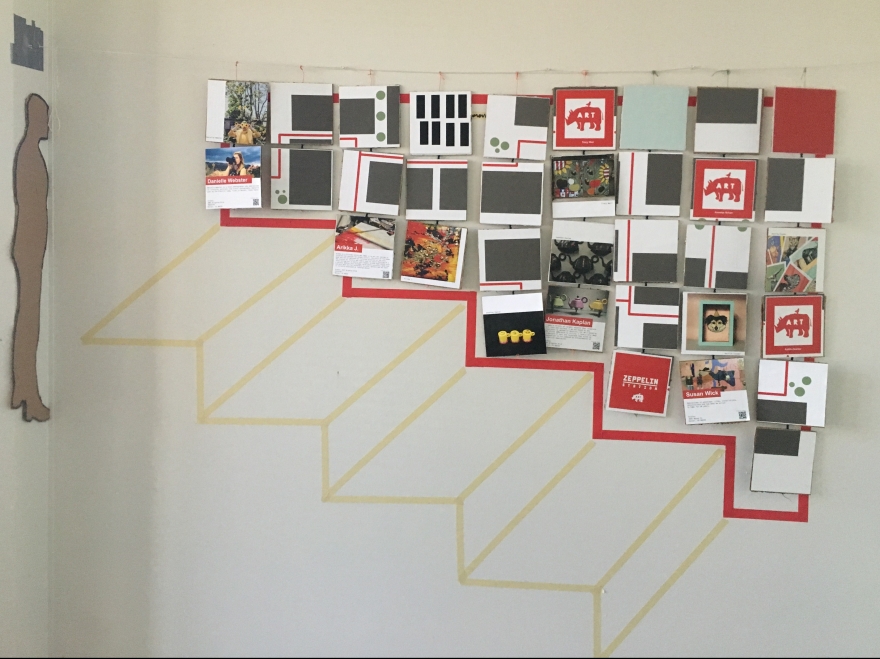Objective
Design a concept and construct a working model for a site-specific interactive experience. Create something that engages users in physical space, and focus on how the concept integrates into the environment.
In this design, consider what instantiates the interaction. For example, does the user need to push a button? Or is the experience dictated by changes in time of day? The concept does not need to be contingent on user input, but it should be dynamic in how it changes over time. You might choose to make something useful, informational, artistic, collaborative, experiential, etc.
This project is not only conceptual, you also will need to implement your design. Be conscious of scope, and pursue something that is within the realm of possibility for your group to achieve.
Choosing a site
Your concept must be site-specific, and we suggest choosing a location that you can actually visit – i.e. a site in Boulder or Denver.
Site Ideas:
Zeppelin Station in RINO
- Train tracks in between
- Patio space
- Green Roofs
Other Site ideas
- Pyramid at Botanic Gardens
- Mayan Theater (Denver)
- Trail Connection at Red Rocks
- Denver Convention Center
- Union Station
- Boulder Public Library
Concept Pitch (March 7th)
Site Analysis: Zeppelin Station
Establishing photos of Zeppelin Station:
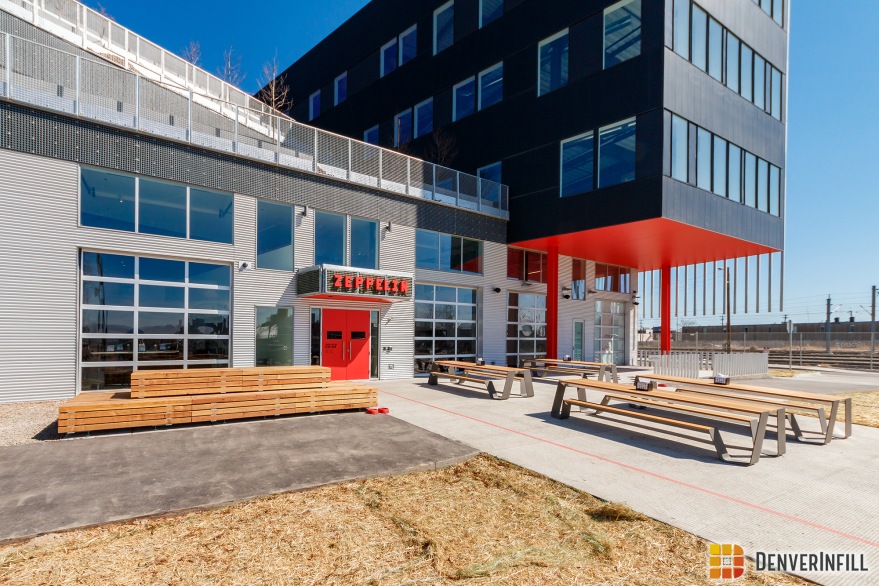
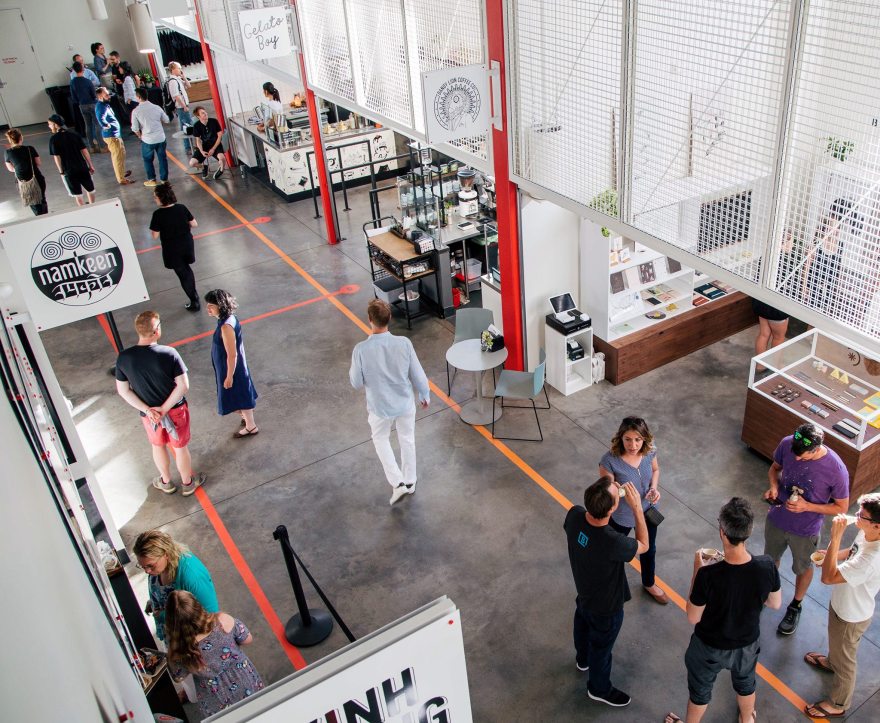
Flow of movement throughout Zeppelin station:
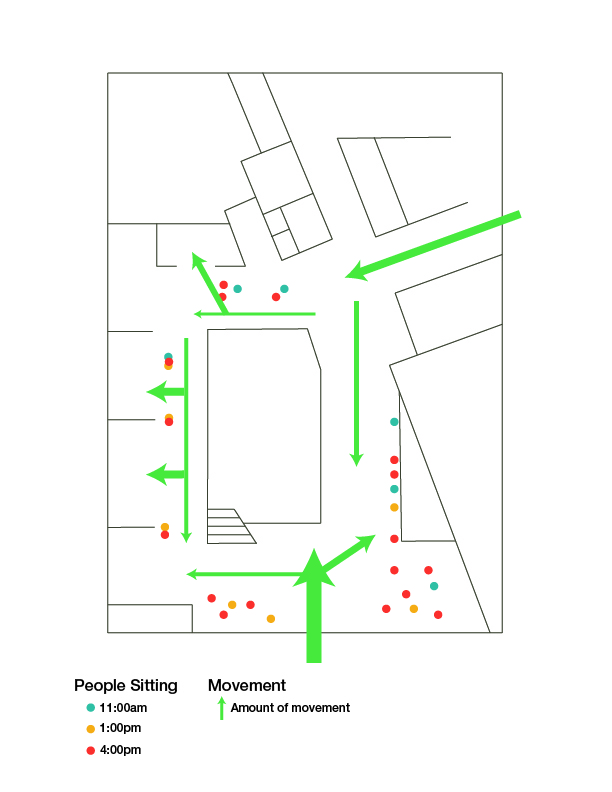
Floor-plan:
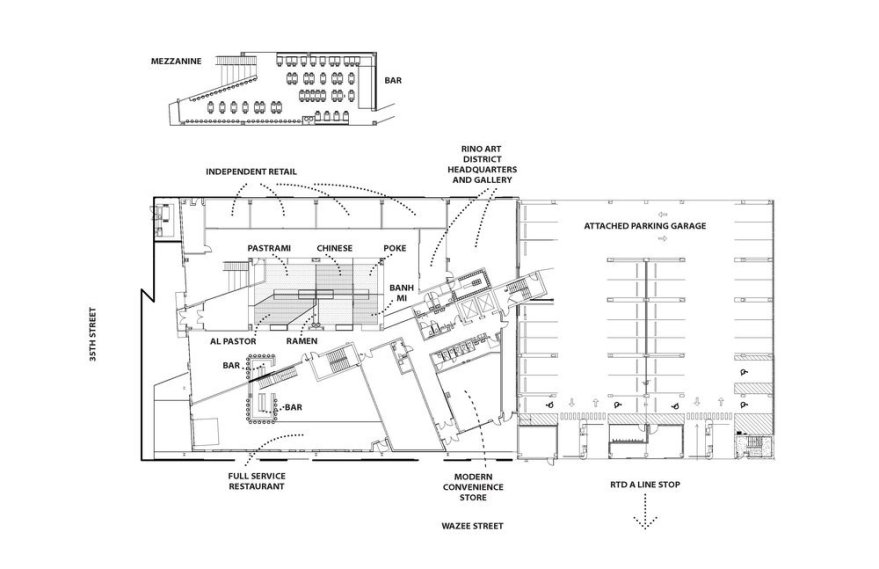
Zeppelin station is an immersive 100,000 square foot creative workplace and market hall located at the 38th & Blake Station on the RTD’s commuter rail line. It is designed to bring together innovators and give cultural experiences to the community. Based off of our site observations, most people come to Zeppelin Station to be social with their friends, hang out, get food or drinks, or shop at the small markets.
Here is the final design of our site analysis poster:
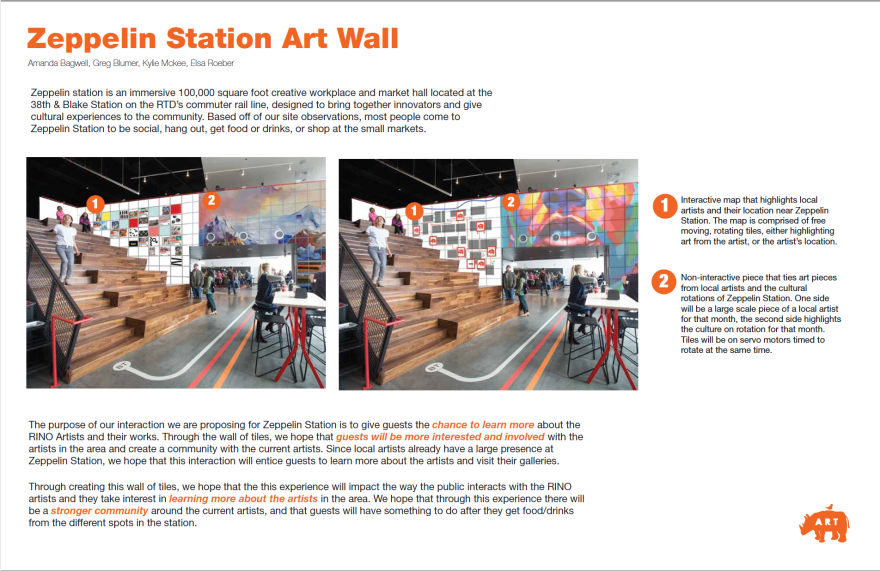
Design Context
When developing context of our project, this matrix was helpful:

For our interaction, we propose installing a wall of tiles that rotate with one side being an abstract map of the RINO art district and on the other sides with artists’ works and biographies with information about them and where there galleries are. There would also be tiles that are blank for guests to doodle on and add to the wall of art.
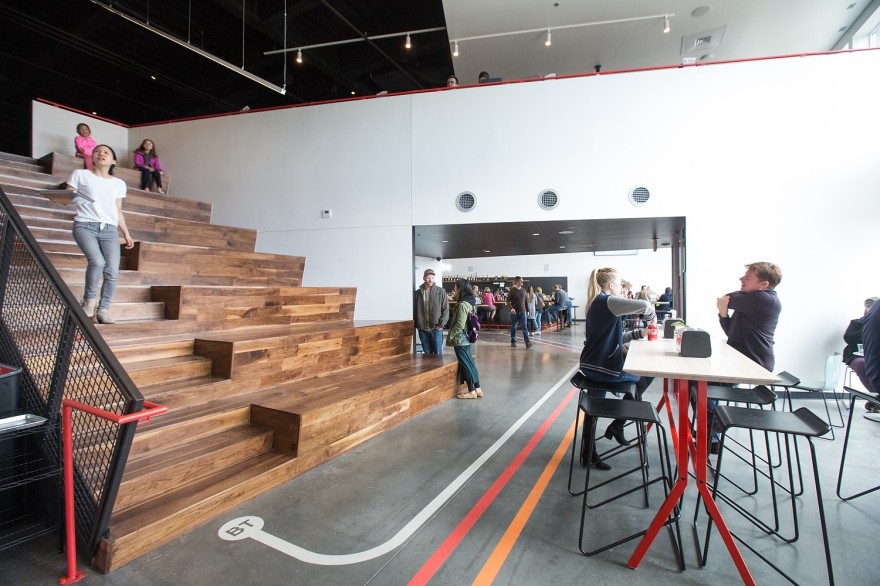
We would install these tiles on the wall space by the stairs that leads up to the second floor of the station. This would allow guests to interact with this space if they are going up or down the stairs, or if they are hanging out on the larger steps.
Design Concept
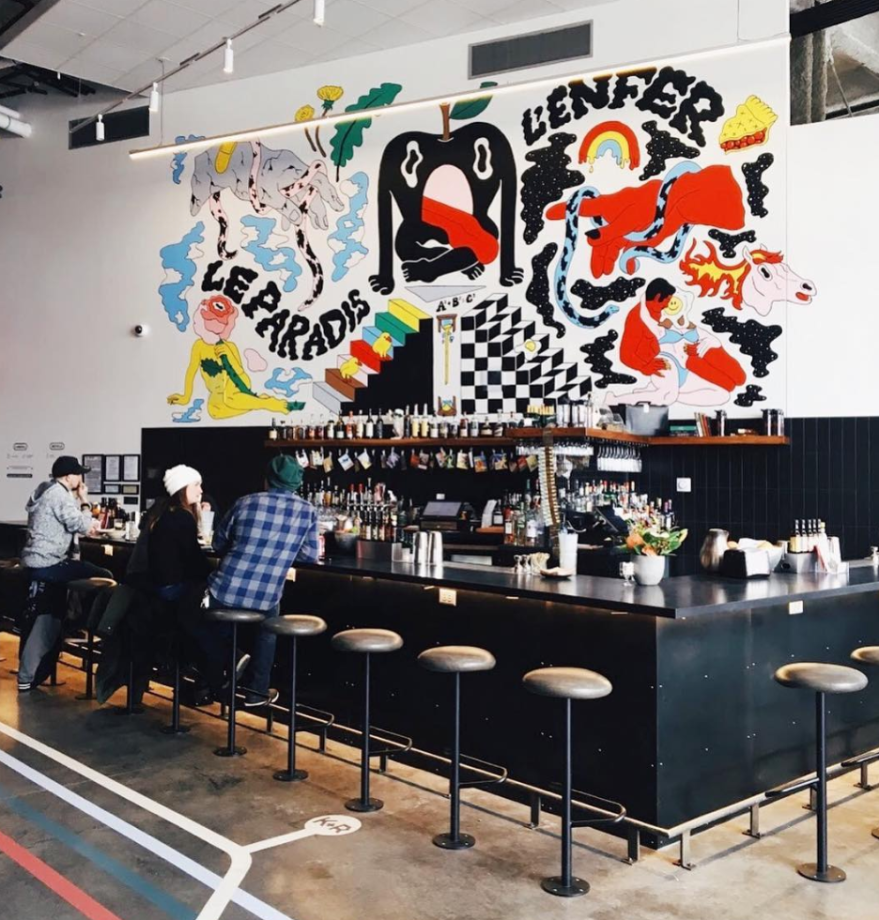
Our main idea was to prompt connectedness to the RINO art district. People usually spend time just sitting or eating in Zeppelin Station, with seemingly no sense of “okay, where do we go after we get drinks?” or “what is special about the space that I’m in?” We want to improve that. Since RINO has so much to offer, we want people to be more present within it.
Purpose of our Experience

The purpose of our interaction we are proposing for Zeppelin Station is to give guests the chance to learn more about the RINO Artists and their works. Through this wall of tiles, we hope that guests will be more interested and involved with the artists in the area and create a community basis around the current artists. With a large presence already at Zeppelin Station, we hope that this interaction will entice guests to learn more about the artists and even go visit their galleries.
Impact of the experience
Through creating this wall of tiles, we hope that the this experience will impact the way the public interacts with the RINO artists and they take interest in learning more about the different artists in the area. We hope that through this experience there will be a stronger community based around the current artists and guests will figure out what to do after they get food/drinks at the different spots at the station.
Here is our hero shot:
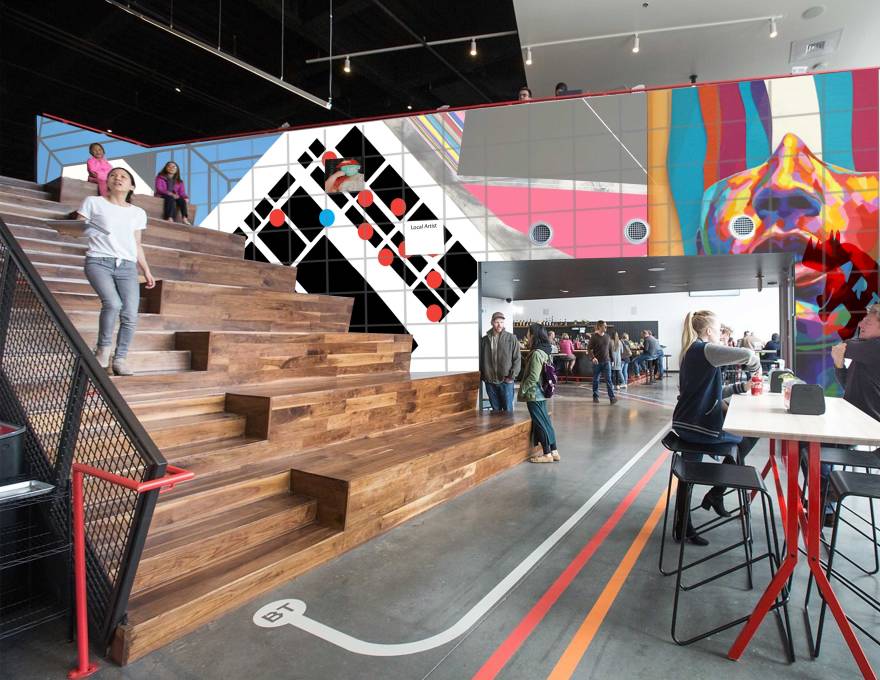
Context renderings:
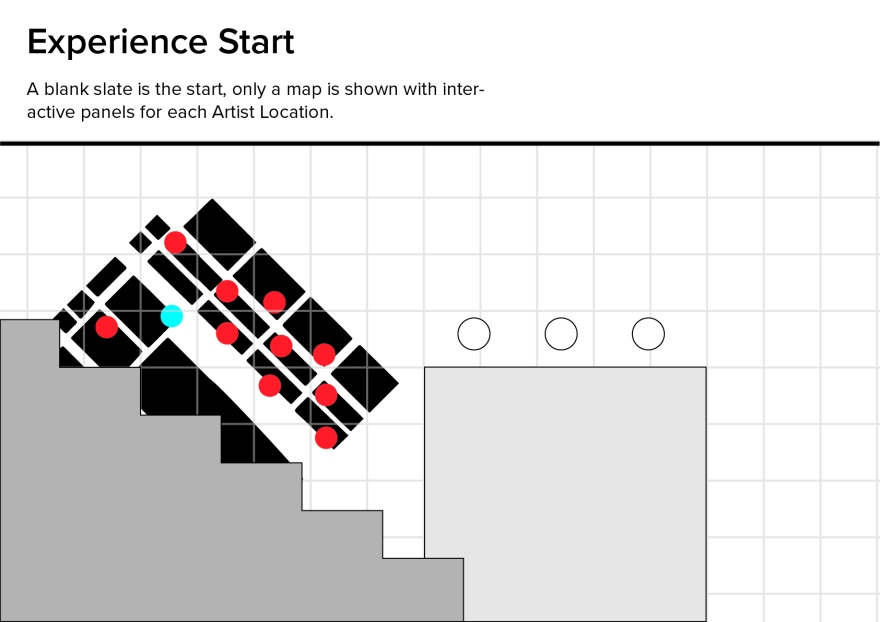
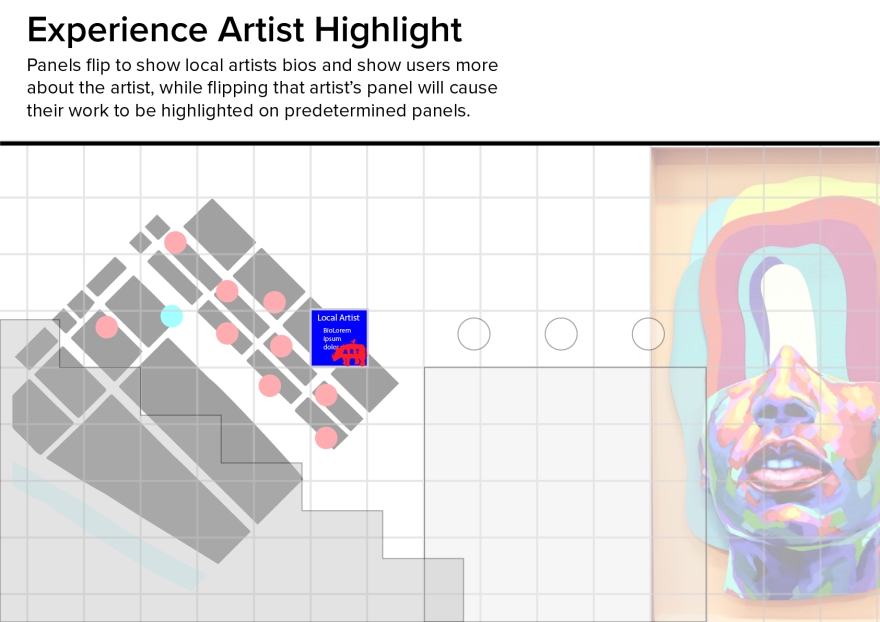

Interaction Diagram:
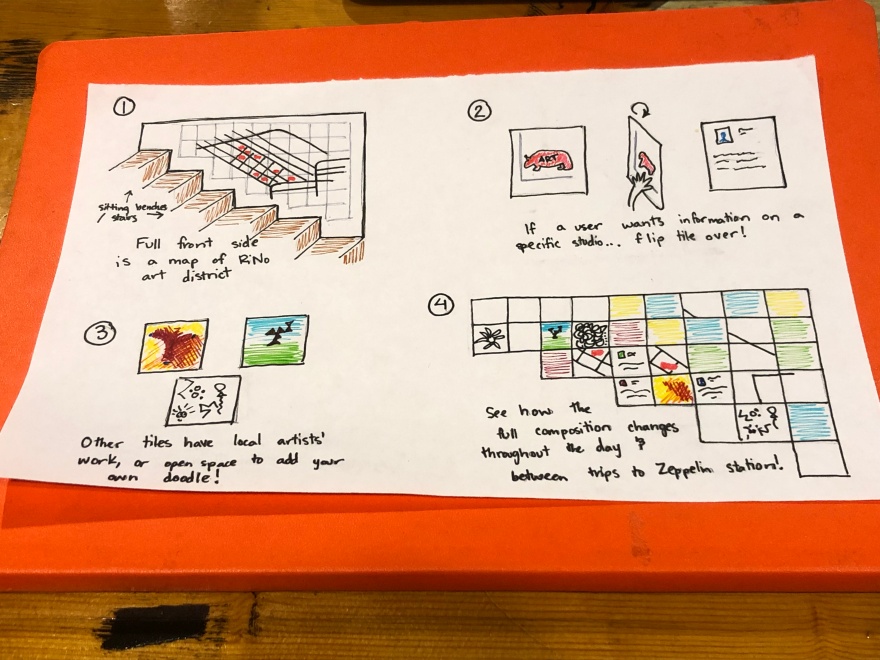
Prototyping and Process
After deciding to pursue the Wall of Art tiles at Zeppelin Station, we began to prototype what we hoped this would look like and how it would then be implemented into the space. We first laid out 34 3″ x 3″ pieces of paper that represent the tiles and then decided to create the tiles half-scale (6″ x 6″) to what the size would be in the actual space. After deciding on the size of the tiles we created the front and back for each tile using Adobe Illustrator and decided to have the front of the tiles display an abstract map of the RiNo art district surrounding Zeppelin station. Then on the other sound
Here is our final design for the front side of the tile wall. Each tile with a rhino on it has information about an art studio, with a QR code that links to their website.
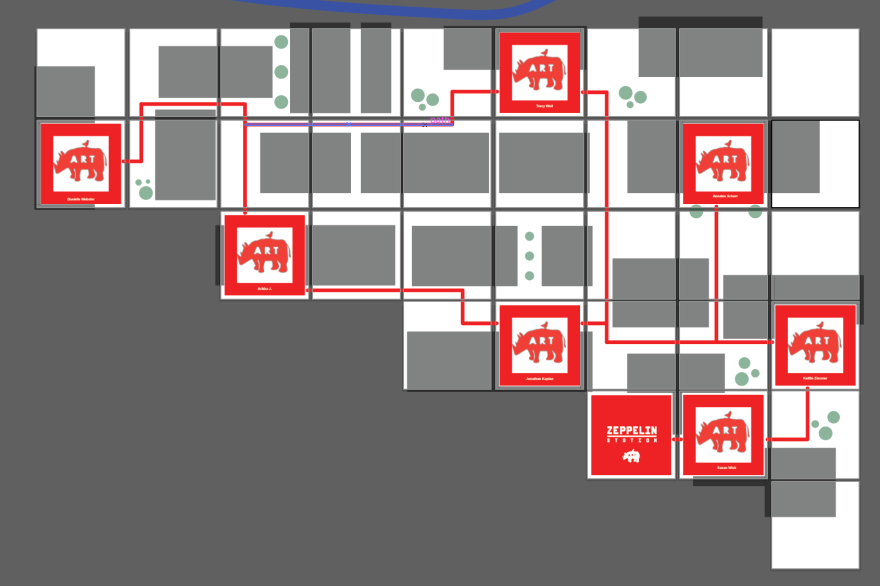
Here is the backside:
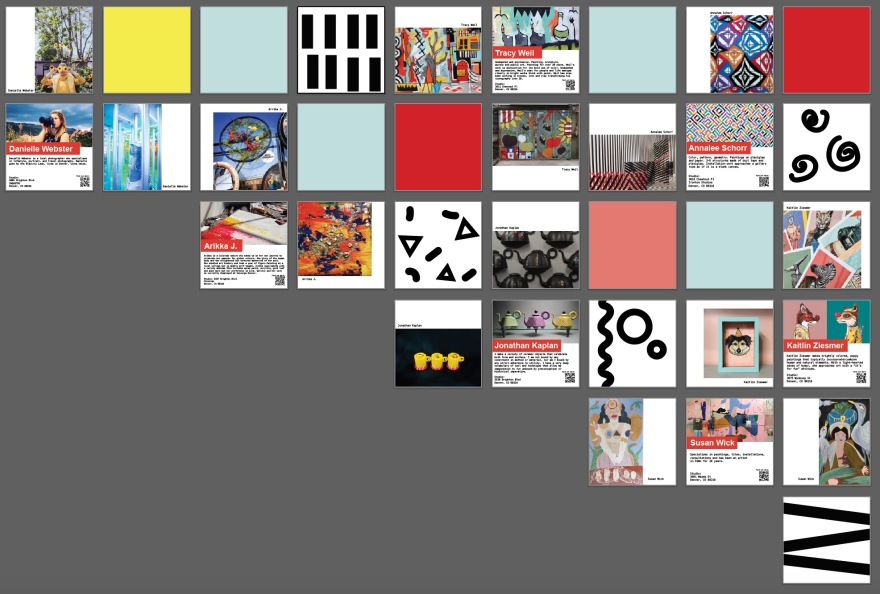
Example of an artist’s tile:

Once we had all the tiles designed, we made small paper tiles to stay organized with the layout.
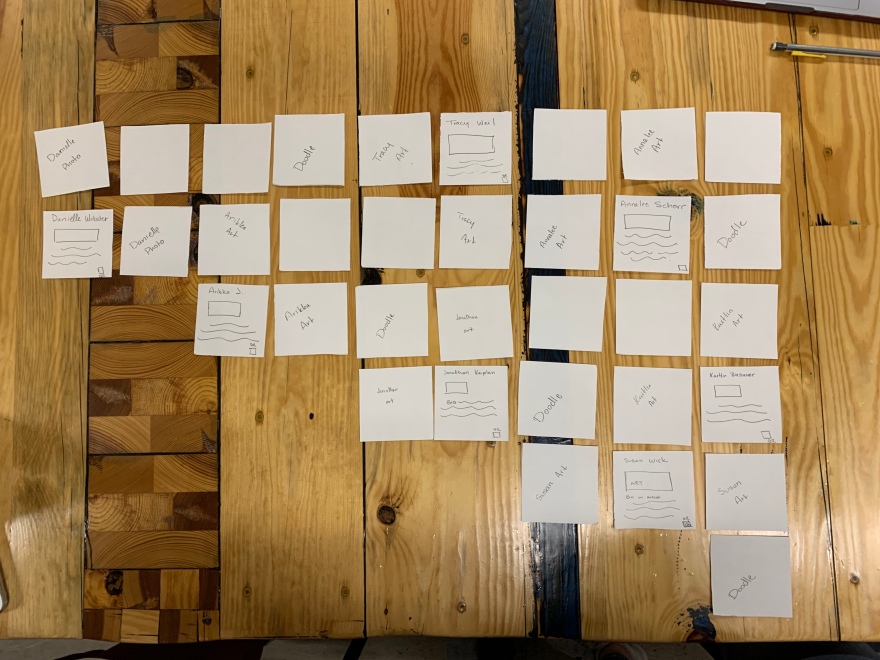
During studio time in class, we taped a to-scale outline to the wall, and made some practice tiles out of cardboard and pipe cleaners. (scale: 6″ = 1′)

We then glued our printed tiles to 34 cardboard squares.

Final Product
Here is the final installment of all of our tiles. We also added a to scale cardboard outline of a person next to our project to give a sense of how big the tiles are for users. Along with some stairs to make our installment more analogous to the real Zeppelin Station.
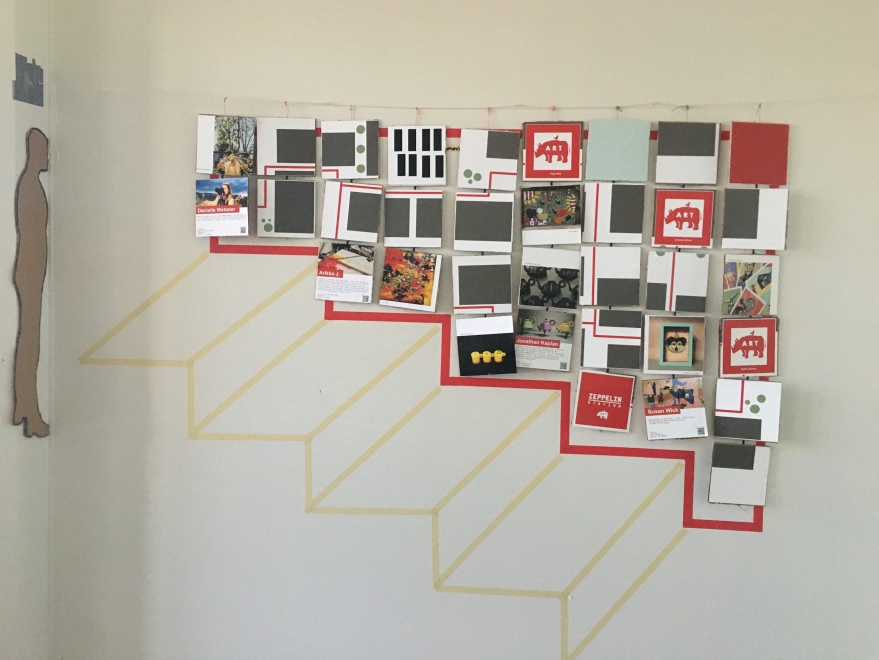
The tiles can be flipped!
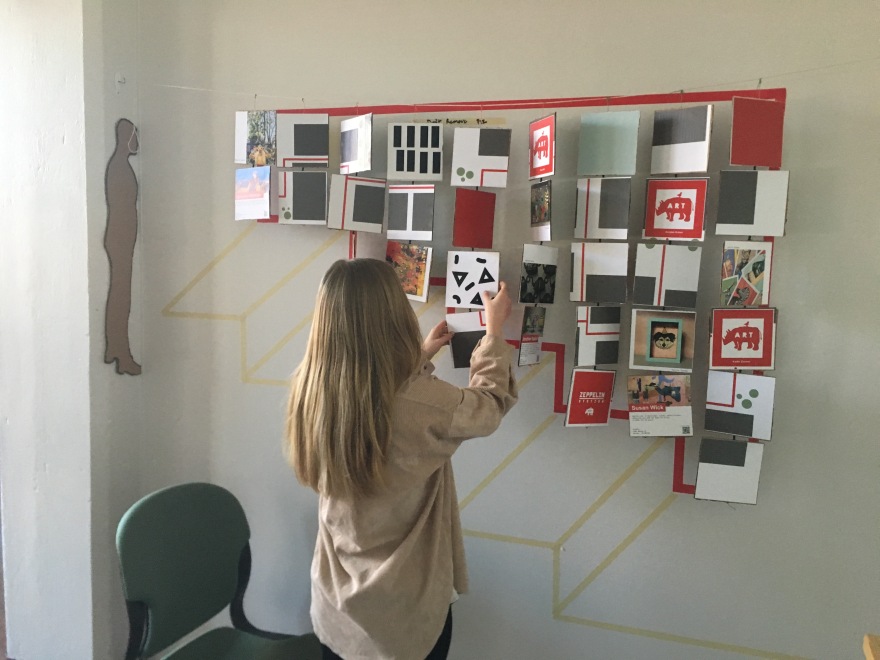
Critique & Reflection
When talking with our instructors, we had to really focus on concept. Thinking about the impact of our installation was really important. We nailed down the setting pretty quickly, but had to really hone down the idea of how our installation would enhance users’ experience while visiting Zeppelin Station. Using the existing art culture of RINO’s neighborhood was a good and intersecting it with the space Zeppelin Station was good for our project enhancement.
If we had the opportunity to make our project full scale, we could make the fabrication more built out. We’d have 1′ x 1′ tiles, made of some kind of acrylic that would show the colors well and be durable. The portion of the wall above the doorway would have art above it that showcases the culture that Zeppelin Station is featuring at the time. It would also be reversible tiles to fit the aesthetic of the rest of the wall. Also, the mounting structure would be more fixed.
Sources
Zeppelin Station website: https://zeppelinstation.com/
Zeppelin station instagram: https://www.instagram.com/zeppelinstation/
Arrika J: https://rinoartdistrict.org/go/arikka-j https://www.instagram.com/arikkaj/
Jonathan Kaplan: https://rinoartdistrict.org/go/jonathan-kaplan http://www.plinthgallery.com/new-page
Danielle Webster: https://rinoartdistrict.org/go/danielle-webster-photography http://daniellewebster.com/
Tracy Weil: https://rinoartdistrict.org/go/tracy-weil http://tracyweil.com/about-weil/
Susan Wick: https://rinoartdistrict.org/go/susan-wick https://artviewer.org/susan-wick-at-vacation-gallery/
Kaitlin Ziesmer: https://rinoartdistrict.org/go/kaitlin-ziesmer https://www.instagram.com/kaitlinziesmer/?hl=en
